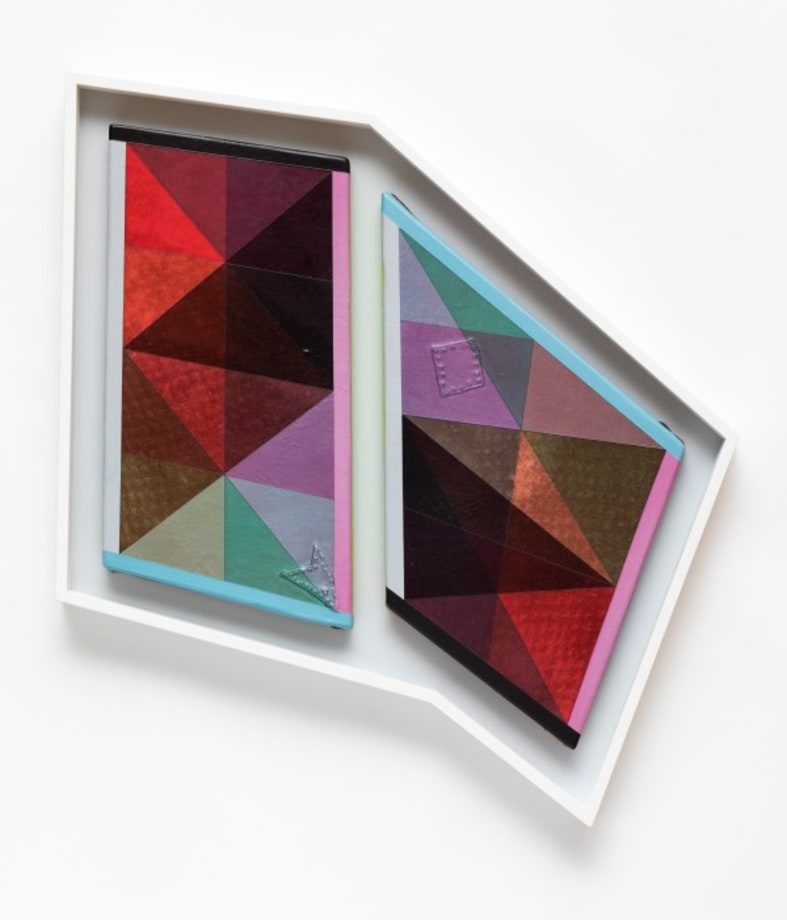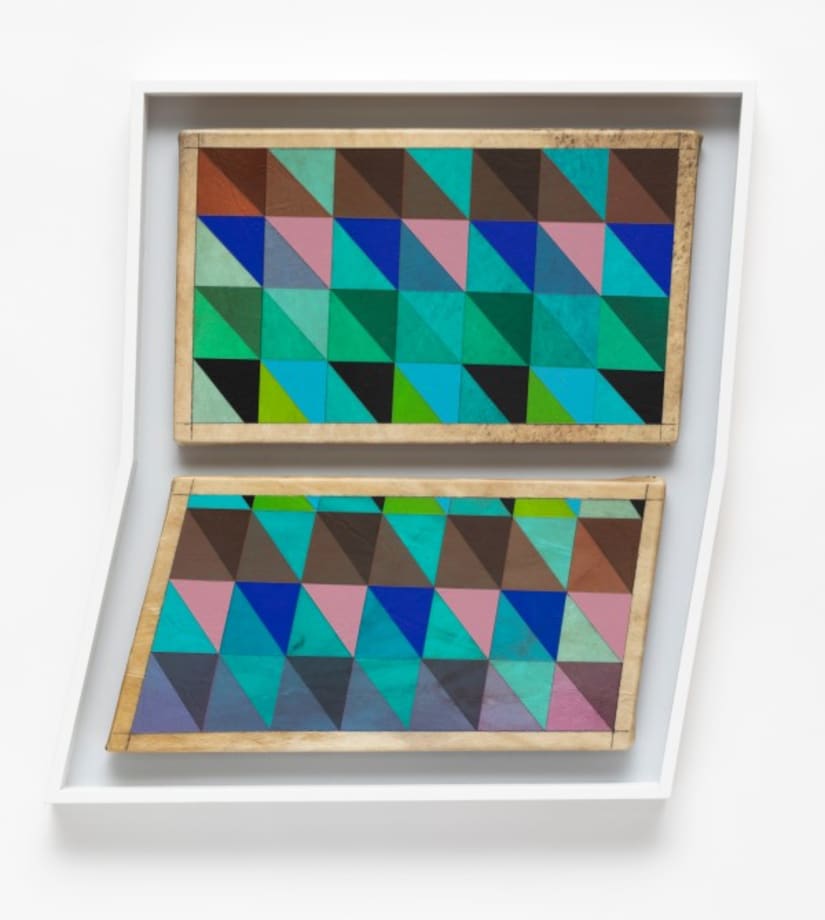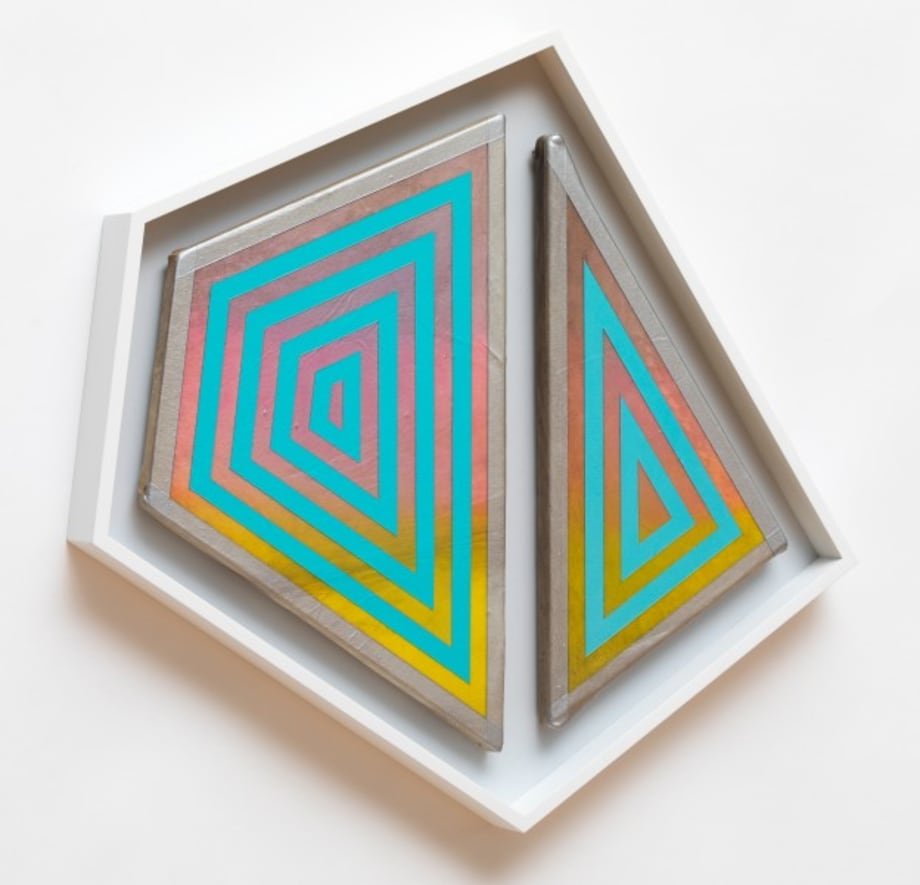Beyond identity politics, the art of Jeffrey Gibson
Amy Zion
The artist effortlessly weaves Native American heritage into geometric abstraction
To visit Jeffrey Gibson, I headed upstate. As New York City receded into the distance, I retraced the route the artist took back in 2012, when he moved his studio from Brooklyn to Hudson and began teaching art at Bard College. A couple of weeks before we met, the first leg of Gibson’s major touring exhibition, ‘Like a Hammer’, had closed at the Denver Art Museum. The show is a major milestone for the artist and focuses on works produced since 2011, when his practice started to incorporate references to his Native American heritage. Thus, conversations with Gibson almost inevitably begin by addressing the Great Identity Problem: that by asserting someone’s identity you might qualify them unnecessarily (for example, ‘the female prosecutor from Arizona’) or reductively. And that by asking someone to self-identify, you simultaneously grant them agency and create a framework that cannot be challenged. Yet Gibson, who is all too familiar with these issues, professes a strikingly open attitude to the subject.

His background and subjectivity are arguably more multilayered than most. The artist has ties to Mississippi and Oklahoma, where his Choctaw and Cherokee forebears are from, but as the son of a civil engineer in the US Army, he grew up in Germany and Korea. He went to school in England and married a man from Norway – his is a kaleidoscopic perspective of the world that is evident in the way he approaches art making. ‘This kind of movement through different forms of identity has made me grow and see the world in a very broad way,’ he says. That translates in his work as a wide range of references, techniques, and histories smashed together. In each piece, the idea of authenticity and purity is further challenged.
Today, Gibson lives and works in Claverack, near Hudson, New York. As I drove north, I looked out for an old schoolhouse. Around the back, an assistant greeted me and led me into its former gymnasium, where I found the artist finishing a couple of emails and a few headphone-sporting collaborators working silently on a new series of the elaborately beaded punching-bag sculptures for which Gibson is best known. These works and others like them, as well as paintings and tables covered with multicolored supplies, were spread out over the floor, which still bears the markings of overlapping sport arenas.
Peeking out from Gibson’s sleeve was a whimsical tattoo of a childhood drawing of his that was found tucked into the bible of his Baptist minister grandfather. As we spoke, the backdrop of the studio came into focus. Behind him was a finished sculpture based on papal garments and the ghost shirts worn during the 19th-century Native American Ghost Dances (which are related to Mormon undergarments, Gibson explained). Its sleeves were adorned with Native American jingles and its details related to the artist and activist Sister Corita Kent, as well as elements from Gibson’s dreams and more personal iconography, such as song lyrics from his youth.
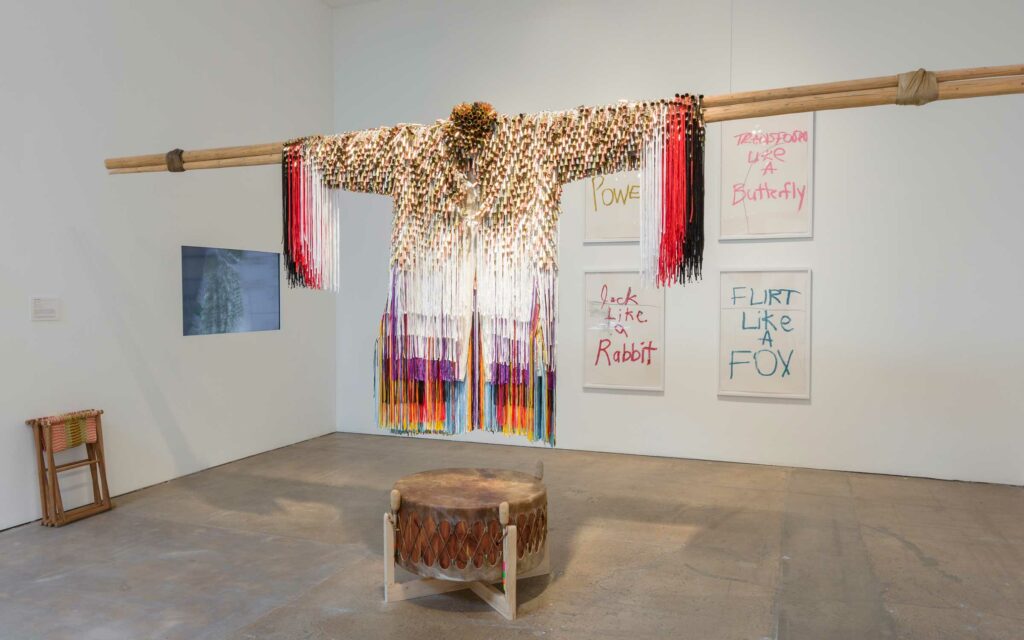
Despite his range of references, Gibson says he hates the word ‘eclectic’. He prefers to characterize his approach in terms of anthropophagia, a concept initially developed by the Brazilian poet Oswald de Andrade, which sees the absorption (or ‘cannibalism’) of other cultures as a source of strength. Jingles were originally made from rolled-up tobacco lids but, today, they are mass-produced in Taiwan expressly for the purpose of decoration. ‘That is a foreign material that clearly has been reinvented and become part of another culture […] What a powerful ability that is to claim something and use it exactly for what you need it,’ he says. For the artist, having different worlds collide in this manner is creative strategy for breaking apart reified historical metanarratives. It is also a way to confound ideas of identity – that any one culture has ever been totally separate from one another, or that appropriation has only ever occurred in one direction: by the colonizer from the colonized.
‘Like a Hammer’, which is touring to the Mississippi Museum of Art, the Seattle Art Museum, and the Madison Museum of Contemporary Art, highlights a fundamental turning point in Gibson’s work. Prior to 2011, the artist was producing more classic, albeit innovative, abstract painting. The shift followed a period when Gibson was ready to call it quits as an artist. While trying to figure out what to do next, he received a grant to travel to Winnipeg in Canada, South Dakota, Oregon, and Oklahoma, to meet with traditional artists who were making things for their communities. Gibson felt their sense of conviction was absent in his world in Brooklyn: ‘When I came back I decided, “You need to stop trying to perform what you think an artist is supposed to be doing and focus on what you want to do, what you want to say.”’
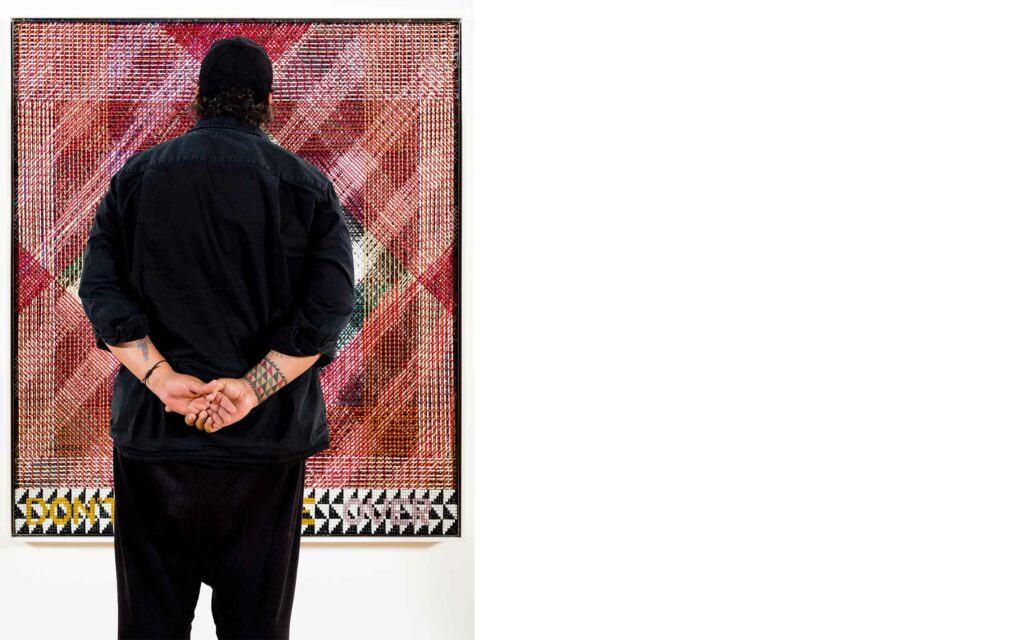
Around the same time, he began making what he calls ‘rawhide paintings’, inspired by the parfleche bags produced from animal skin by nomadic tribes in the Great Plains. Traditionally, the rawhide would be laid flat, painted in geometric designs, and then folded over to form bags. Gibson tells me that they were painted by women, who would have treated their brushes or painting tools as ceremonial objects. ‘They might have been saying a prayer [while they worked] and made it for a specific person,’ he says. Yet the glossy pages of an auction catalogue in which he used to see them conveyed none of that content.
The works Gibson is showing at Art Basel Miami Beach are an extension of this series. The irregularly shaped diptych canvases are framed together and named after songs from the artist’s high-school years, a period when Gibson was coming to terms with his sexuality, amid the Aids crisis. Stretched from skin, each canvas preserves a clean, taped-off border, revealing the organic material supporting the hard-edge abstract motifs. Gibson’s work comes after the more conceptual approaches by Indigenous artists such as James Luna and Edgar Heap of Birds, who created a bridge, to use Gibson’s term, from more traditional Indigenous, or at least separated, art spheres into the framework and context of contemporary art. Gibson’s work, with its references to multiple cultures, techniques, and narratives, owes its nimbleness, in part, to the efforts of these predecessors.
Discussing his Native American influences, Gibson muses on their relationship to Modernist painting and the history of geometric abstraction, which was so key in shaping his own early practice. ‘Why has no one ever done an exhibition comparing these histories?’ he asks. ‘To have had this conversation as part of my education would have benefited me tremendously.’ As he says this I realize Gibson has been letting this conversation evolve within his own work. The language of hard-edge abstraction and traditional parfleche-bag designs and materials do not simply come together in his latest works – their conflation is like a chemical reaction that wildly reshapes the format of the support and its frame. This is perhaps why one can’t sum up an artist’s identity through labels and hyphen. Great work never fails to confound preconceived ideas.
Amy Zion is a curator and writer based in New York City.
Jeffrey Gibson’s work will be shown by Roberts Projects in the Nova sector of the 2018 edition of Art Basel Miami Beach. Discover more artists and galleries participating in this year’s Nova sector.
Jeffrey Gibson, A LOVE SUPREME (detail), 2017. Courtesy of the artist and Roberts Project, Los Angeles, California. Photo by Peter Mauney. Filmmakers Cristobal Leon and Joaquin Cociña turn Chile’s darkest hour into a stop-motion fairy taleInspired by the brutal history of Colonia Dignidad, the film is a must-see at Art Basel Miami Beach
